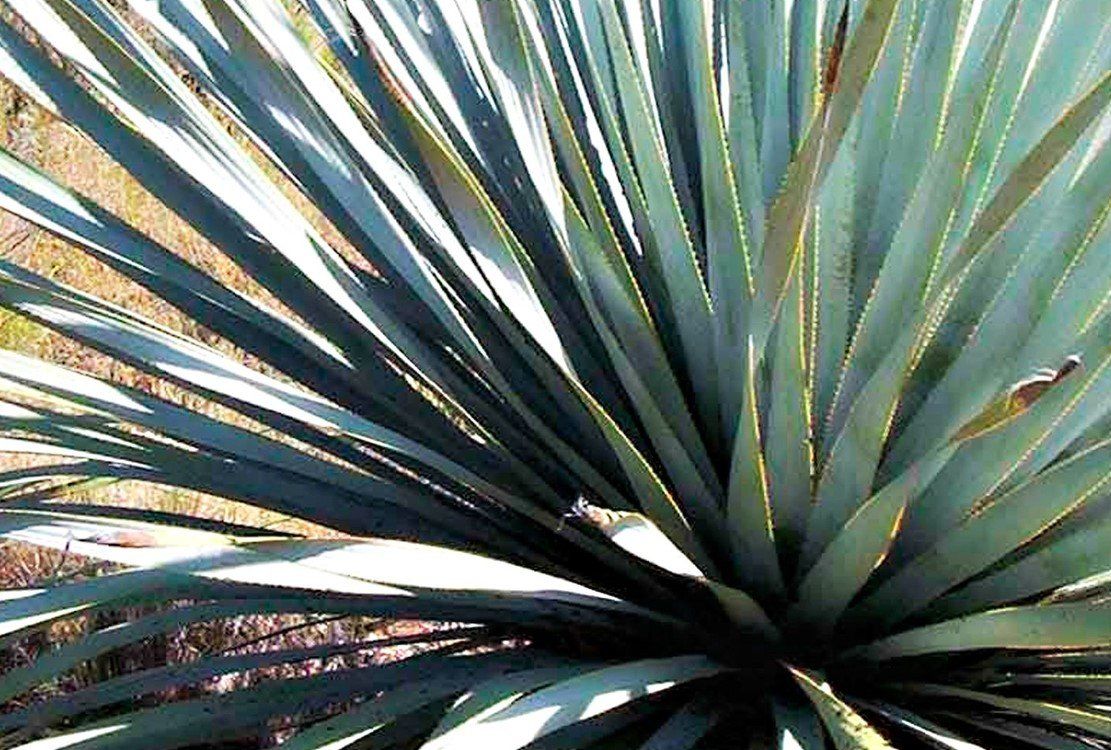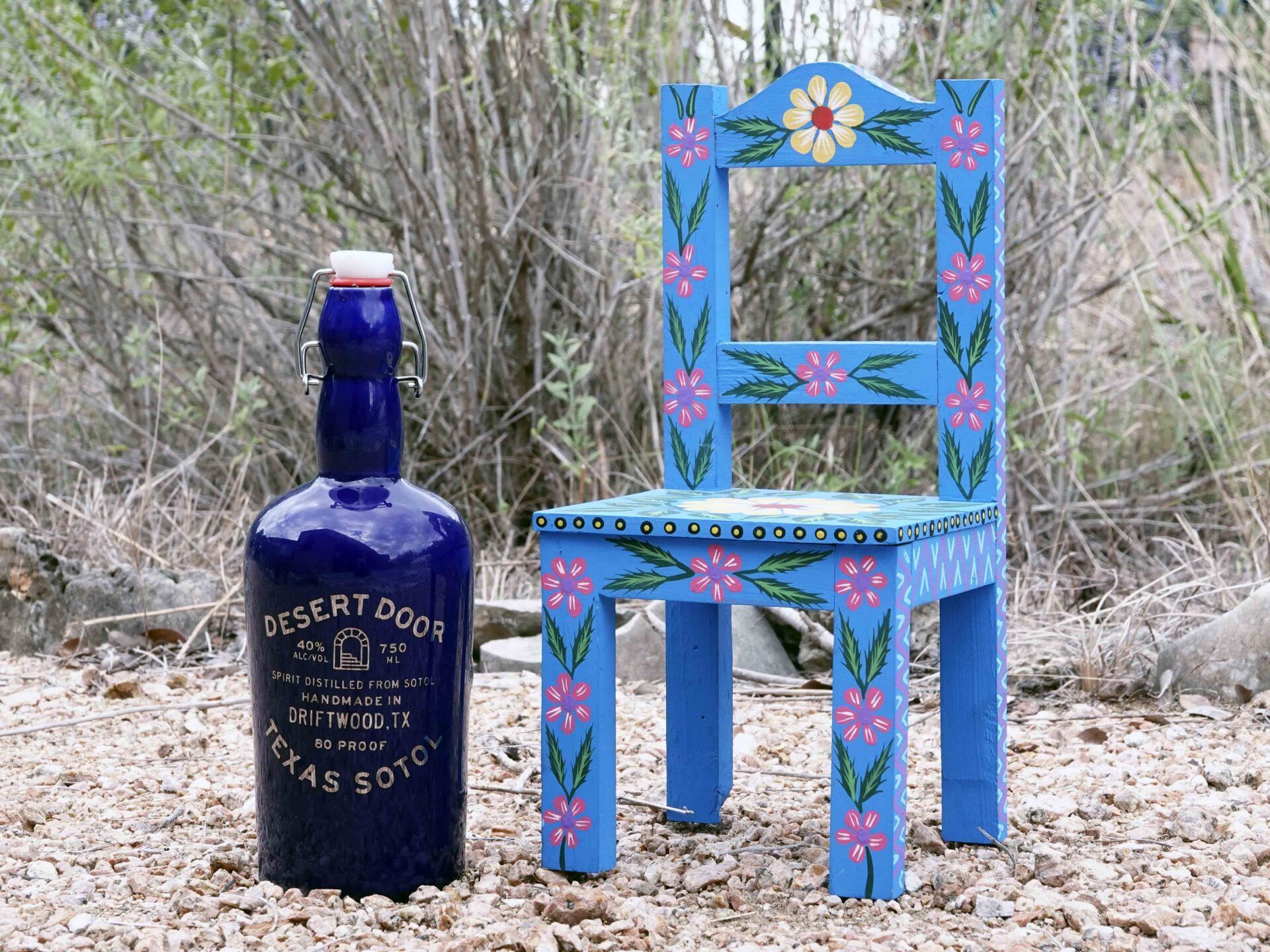December 2022 Blog from Tepoztlan-Vacation-Rentals.com
Sotol: A Success Story 800 years in the Making
(As Told by a Latecomer to the Party)
by Jorge Lane Terrazas
Photography by author except as noted.
Copyright © 2022 Jorge Lane Terrazas. All Rights of story and photographs reserved.
Tres Amigos: Desert Door, Flor del Desierto, and Hacienda de Chihuahua Sotol
Introduction.
Sotol dates back over 800 years. The Anasazi, Tarahumara, Paquimé and other indigenous peoples in northern Mexico and the states of Texas, New Mexico and Arizona, made this alcoholic beverage for ritual and curative purposes, and one would assume for pure pleasure too. Modern-day archeologists reportedly found receptacles with traces of what they identified as sotol at the Paquimé archaeological site on the southern end of my hometown, Casas Grandes, Chihuahua.
Sotol is made from varieties of dasylirion plants often called sotol in Spanish and desert spoon in English. Contemporary botanists no longer consider sotol plants to belong to the same family as agaves, which effectively now differentiates sotol from tequila and mezcal.
A little known liquor in the United States and even in a great part of Mexico, sotol has been garnering international attention in recent years amongst a small but growing community of aficionados. Julia Roberts, the famous Hollywood actress, is credited with coining the phrase “Like Tequila, Love Sotol” and is said to offer tasting samples to guests. Lenny Kravitz, the American singer-songwriter, recently became the latest celebrity to launch a brand of alcohol, in this case Sotol NocheLuna in late 2022.

Sotol Plant (Stock Photo)
Background Information
Sotol plants thrive in the wild and most commonly in arid and hot climates. Since sotol plants are abundant in the wild and because harvesting the “heart” of the plant to make sotol does not kill the plant itself, most commercial sotol brands rely on naturally growing plants. As a distilled spirit, commercial sotol, with some exceptions, is an artisanal product.
Following traditional methods, most sotol makers, known as “sotoleros” in Mexico, cook the harvested hearts using in-ground pits and firewood, thus giving it an earthy and smoky appeal. Sotol is usually both softer than tequila and more agreeable than mezcal.
Due to the small-scale artisanal nature of sotol, as well as traditional methods of production, nose and taste can vary a fair amount from batch to batch.

Image of shot of sotol and agate gemstone from Chihuahua (Casas Grandes Region)
My Sotol Story: Latecomer to the Party
My own relationship is a complicated one. In my youth growing up in Casas Grandes, sotol was not available as a commercialized product in respected and regulated stores. Instead it was considered moonshine, having been illegal to produce at one time or another and subject at times to police shakedowns even when not considered illegal.
A number of times in my pre-teen and early teenage years, my father when entertaining friends would hand me an empty 750ml bottle and some pesos and direct me to go get the bottle filled.
I dreaded this “chore” more than any other. Even more than cleaning stockyards.
Casas Grandes had one known sotolera, Doña Luz, a gruff older woman. Going to Doña Luz’s home-based establishment meant walking down dark and unlit streets and, as I got closer to my destination, having to sneak past small groups of rowdy men leaning against walls as they drank the while away.
No matter how many times I made the trek to Doña Luz’s and knocked on her door, the same routine unfolded every time. She would open a small square pass-through opening in her door, stare at me harshly and ask, “¿Qué quieres, chavalo?” Once I explained my father’s request, she would ask, “Y quién es tu apá?” After responding with my father’s name, she would have me pass her the money and the empty bottle through the small opening. She would then shut the opening as though I was not to be trusted and return a couple of minutes later to hand me the filled bottle. Doña Luz would then dispatch me with a stern directive, “te vas derecho a tu casa, ¿eh, chavalo?”
"Go straight home, kid? No problem with that and the sooner the better," I would mutter under my breath. Her home brew was one of the foulest things I had ever smelled and the sight of cantankerous and aggressive men on the street “tying one on” would frighten any youngster.
It was only years later that I realized that Doña Luz’s directive to go directly home was not just an explicit order, but also good advice and in her own way an expression of genuine concern for me. If she were still alive today, I would go knock on her door once more just to see what I thought of her sotol as an adult. Maybe, just maybe, it would not be so awful after all.

Sotol Hacienda de Chihuahua
Once I left Casas Grandes sotol faded from my memory until almost 30 years later when a couple, Bruno and Ana, who like me hailed from Chihuahua, offered me a taste of Sotol Hacienda de Chihuahua one evening at their home. Although I was stunned by the fact that it was now available commercially, I politely declined remembering all my visits to Doña Luz’s home. Shocked that I had never tried sotol they sent me home with what was left in their bottle of sotol, assuring me I would like it.
It was a full two years later before I got around to taking the top off the bottle when, Sam, my tennis buddy and next-door neighbor came unexpectedly to see me one day. I got the bottle out simply because I had no other liquor in the house and my thought process in my haste must have been that it is better to offer something, even if awful, as opposed to nothing at all. I waited until Sam took a sip, fully expecting him to wince. When he did not, I decided to try it myself. Low and behold, it was neither as disgusting nor as strong as I had envisioned. Far from it. Just enough earthiness to make it interesting, as well as reasonably smooth and rounded.
My rating of Sotol Hacienda de Chihuahua - Reposado: 4.0 stars
Alcohol Content: 38%. Short-term aged.
Hacienda’s sotols are consistently similar
to each other regardless of their batch or date of production.
Price: About $30 USD on a good day at Total Wines (US). If not on sale, figure up to $45 or so.

Sotol Flor del Desierto
Once again, sotol faded from my memory until ten or so years later when I ran across another sotol label, Flor del Desierto, a small sotol producer also located in the state of Chihuahua.
The label attracted my attention: “veneno orgánico” (organic poison) with drawings of a snake and the classic skull and bones. It boasted being cured with rattlesnake venom, which going back to the times of the Anasazi and Tarahumara peoples was extolled for its purported curative qualities. “Gimmicky and at best is nothing more than one drop of venom,” I thought, “but I gotta try this.”
My first reaction was that it was a good amount earthier than Sotol Hacienda de Chihuahua, as well as peaty --- very peaty, like really, really peaty, but with a silky sensation on the palate, natural complexity and well rounded. Oh, and did I mention smoky?
My rating for Flor del Desierto - Veneno Orgánico: 4.5 stars
Alcohol Content: 45%. Aged for an unspecified period of time.
Price: About $60 USD at City Market grocery chain in Mexico. You have to plan a trip to Mexico as it cannot be commercially imported or sold in the US due to restrictions on products cured with rattlesnake venom.

Desert Door Texas Sotol
One Friday afternoon in theTexas Hill Country some months later, I got a call from Barney, a good friend that had humored me over time by sharing shots with me of both Hacienda de Chihuahua and Flor del Desierto. With ever-present boyish enthusiasm, he said he had a surprise for me and would be driving by for me. A while later as we got close to Driftwood, I saw a dead giveaway as to the surprise Barney had in mind when I saw a store sign for Desert Door Texas Sotol, which evidently had been open for just a short period of time.
A sotol distillery in Texas? Are you serious? Yes, indeed.
We took our first sip of the lone sotol brew available --- it packed a punch, but with the earthy qualities characteristic of sotol. A bit too strong for my taste, but I do have to say it was an authentic and unadulterated sotol experience. The closest I've tasted to a good home-brewed version. I was certain it had not seen the inside of a wood barrel, but that did not deter me from asking the bartender/owner about the aging process. "Should I start from the time the truck came in with the harvested hearts?” “Sure,” I said playing along. "Today’s Friday and, let's see, the truck came in on Tuesday,” he said chuckling before adding, “there ain't no aging.” Barney and I appreciated his candor and his good-natured sense of humor even more. So much so that we ordered another round.
My Rating for Desert Door Texas Sotol: 3.5
Alcohol Content: 40%. Not aged.
For the faint of heart, Desert Door now offers barrel-aged versions too.
Price: About $30 - $50 USD at Total Wines (US)
Closing Thoughts
And, there you have it. This is how after a rough start I came around to appreciating sotol, as well as Doña Luz, even if it was years and years later.
The three brands listed above are not the only brands of sotol on the market. There are others. Actually, quite a few. Finding them is another matter altogether. Given mostly small-scale production and scant marketing, it may take a little searching on your part. In the end it could be worth it and you too might end up becoming a “love sotol” enthusiast.
